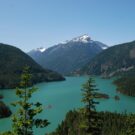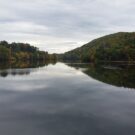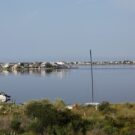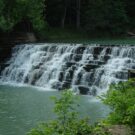Washington, The Evergreen State
by Sandra Merville Hart Washington’s nickname is the Evergreen State for the beautiful, forested lands. Washington is the only state named after a president. The early history of Washington Several expeditions searched for the Northwest Passage (a waterway connecting the Pacific Ocean to the Atlantic Ocean) in the early part of the 19th century. They didn’t find the passage but they did find abundant animals that drew fur trappers to the area. They also found Native Americans—Nez Perce, Yakima, and Cayuse. The United States and Britain claimed this area, then known as the Oregon Territory. The two countries divided the area. Washington Territory Settlers living north of the Columbia River petitioned Congress to create a new section of the Oregon Territory in...
Read MoreVermont, The Green Mountain State
by Sandra Merville Hart Vermont’s nickname is the Green Mountain State. In 1609, Samuel Champlain, French explorer, named Lake Champlain. He claimed the lake and les Verts Monts (the Green Mountains) in the distance as belonging to France. The early history of Vermont Vermont was not one of the original 13 colonies. Both New York and New Hampshire in the mid-1700s claimed the area. New York granted the land to settler families at the same time that New Hampshire gave the same land to someone else. This caused lots of arguments. New York received support from the British government that they were in the right. Those with New Hampshire didn’t give up. They formed the Green Mountain Boys to force the New York families out. Vermont Republic Vermont wrote a...
Read MoreUtah, The Beehive State
by Sandra Merville Hart Utah’s nickname is the Beehive State. It earned this nickname from the Mormons, who arrived there in 1847. The Mormons believe in working hard much as bees do. The Ute were Native American tribes who lived in Utah and Colorado. Ute means “land of the sun.” The word is also interpreted as “high -up.” This is how Utah got its name. The early history of Utah The Ute, Shoshone, and Paiute were living in Utah when two Spanish explorers, Silvestre Velez de Escalante and Francisco Atanasio Dominguez, made maps of the area in the late 1700s. In 1847, a religious group called the Mormons built the first permanent white settlement in the Salt Lake Valley. First Transcontinental Railroad The Union Pacific Railroad met the Central Pacific...
Read MoreDelaware, The First State
by Sandra Merville Hart Mrs. Anabelle O’Malley’s first grade class, Mt. Pleasant Elementary School, requested that “The First State” become Delaware’s nickname in 2002. The first state to ratify the U.S. Constitution was Delaware, making them the first state on December 7, 1787. Delaware’s early history The Dutch West India Company claimed the land from the Delaware Valley to the Hudson Valley in 1624, hoping to build a colony there. The first group of Dutch settlers came in 1631. They were killed in a fight with Native Americans. Swedish settlers Swedish settlers came in 1638. Then the Dutch took control of the area we know as Delaware in 1655. After that, the English and Dutch competed for the land until England finally took over in...
Read MoreIndiana, The Hoosier State
by Sandra Merville Hart Indiana’s nickname is The Hoosier State. Historians and Hoosiers give theories about the meaning of the nickname, but the reason behind the name has been lost in history. Indiana’s early history The French explored the Indiana area in 1679 and later began trading with Native Americans. After 1715, the French built military posts to keep British fur traders away. The British gained the region east of the Mississippi River after the French and Indian War. England lost control of the area that included Indiana after the American Revolution. Indiana became part of the Northwest Territory. It became the Indiana Territory in 1800. Indiana becomes a state Indiana became a state on December 11, 1816. The capital is Indianapolis. Shawnee Chief...
Read MoreArkansas, The Natural State
by Sandra Merville Hart Arkansas is known as The Natural State. With five national parks and three national forest, the area is famous for natural scenic beauty with many clear lakes and streams. Arkansas’s early history Arkansas is part of the Louisiana Purchase. In 1819, it became a separate territory. Arkansas becomes a state Arkansas became a state on June 15, 1836. The capital is Little Rock. Confederate States of America Arkansas was a slave state and seceded from the union to join the Confederate States of America at the time of the Civil War. A mispronunciation? Early French explorers called the Quapaw people by the name “Arkansas.” The Illinois, another local community, referred to the Quapaw as Akansea, so the French probably mispronounced the...
Read More









